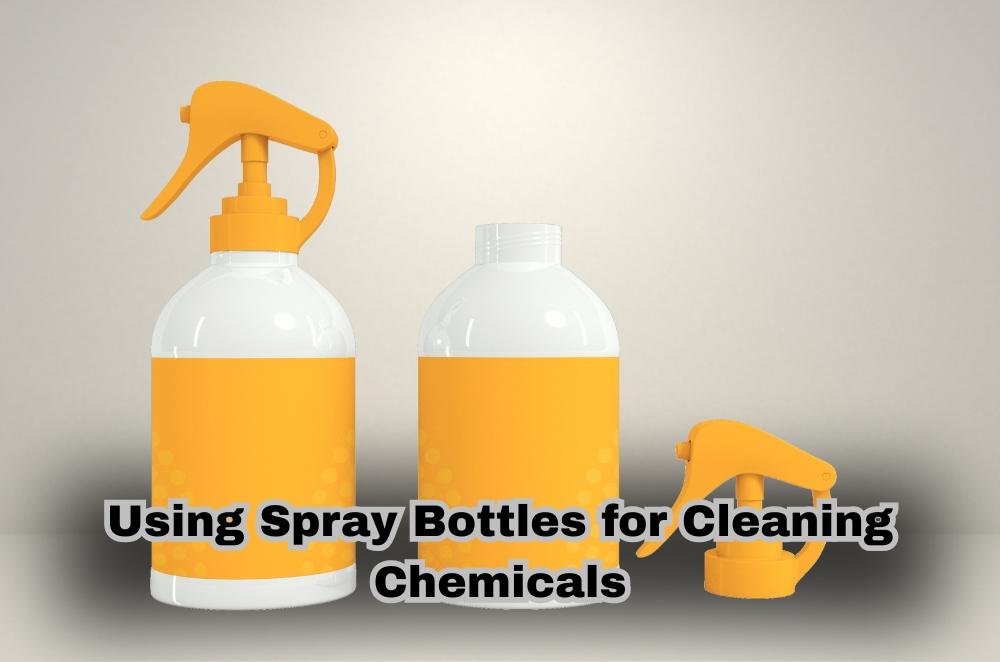Using Spray Bottles for Cleaning Chemicals

Spray bottles are everywhere, but if you have ever cleaned professionally, you know not all bottles are built for serious chemicals. I learned this the hard way. Back when I started out doing end-of-lease cleans, I would grab any bottle from the shop, pour in some bathroom cleaner, and hope for the best. Once, I poured a strong disinfectant into a thin plastic bottle and gave it a shake. The next day, the bottom had bulged out, and it leaked all through my kit. Lesson learned.
These days, I always look for spray bottles for chemicals. They are made for harsh cleaners, so the plastic does not give way, and the spray stays even. The difference is huge. If you are just using water, any bottle will do, but as soon as you bring chemicals into the mix, the cheap ones let you down. It is not just about mess, either. The right bottle means you avoid breathing in fumes from leaks or getting harsh stuff on your hands.
Choosing the right spray bottle for chemicals
People do not talk about spray bottle materials much, but they should. I once thought any old bottle would work, until a mate in commercial cleaning set me straight. He showed me bottles made from HDPE. Turns out, those are built for tough jobs and do not get brittle like the cheap, clear ones. I switched straight away. Have not looked back.
You also want a trigger that feels solid, not wobbly. There is nothing more frustrating than a trigger that jams halfway through a job. I have had bottles where the spray went from a fine mist to a sad little dribble in a week. That is when you know you have bought a dud. Go for bottles that let you adjust the spray too—mist for mirrors, direct stream for grout lines.
And always label your bottles. I used to just “remember” what was in each one. Big mistake. Nearly sprayed bleach on a fabric couch once. After that, I always use bottles with writable sides and a good, bold marker. You do not want to guess what is inside.
Checklist for picking a bottle:
-
Is it HDPE or polypropylene?
-
Does the trigger feel sturdy?
-
Is there a clear spot to write on?
-
Does the bottle sit flat and upright when full?
Take a few minutes to get the right bottle now, and you will thank yourself later.
Safety tips for using chemical spray bottles
Cleaning chemicals can be dangerous. It is easy to forget when you are just getting on with the job, but I have had burns on my hands from splashes and one too many ruined T-shirts to take shortcuts anymore.
A few ground rules: Always read the label before pouring anything into a new bottle. Some cleaners do not play nice with certain plastics. Use gloves every time. Seriously, I skipped them once and ended up with dry, cracked skin for a week. Wear goggles if there is even a chance of splashback. I have had a bottle clog up and suddenly clear, spraying straight up in my face.
Keep your work area breezy—open a window, switch on the fan, whatever it takes. Never mix two cleaners in one bottle. Even old residue can cause a bad reaction. And never leave bottles in the sun or somewhere hot. I left one in the car once, came back, and the sides had caved in. Nasty surprise.
If you are unsure about best practice, check what the experts say about the safety of chemical spray bottles. The Therapeutic Goods Administration spells out what is safe and what is not, so you do not have to guess.
Real-world examples: Getting it right and wrong
Let me be honest, most of my “smarts” about spray bottles have come from stuff-ups. A while ago, on a bond clean, I grabbed what I thought was a bottle of glass cleaner. No label. Turns out, it was pure degreaser. Left streaks all over the windows. After the third try, I finally twigged. Since then, every bottle gets labelled the minute I fill it. Simple, but it works.
I now use only empty spray bottles that I buy in bulk. These have not failed me once. If I ever see a crack or the trigger starts sticking, out it goes. Cheaper than ruining a client’s property or my gear.
A friend runs a cleaning team for a big shopping centre. He set up a colour-coded system: blue for glass, red for disinfectant, green for general cleaner. Every new team member gets a rundown and a handful of stickers. Hardly any mistakes since.
How to clean, store, and reuse empty spray bottles
You can get a lot more use out of good bottles than most people think. At the end of every week, I flush mine with warm water and a bit of dish soap. Pump it through the trigger a few times, then rinse and let everything dry out with the lid off. If there is any smell left, fill it with a mix of vinegar and water overnight. Always works.
Never store bottles with leftover chemicals in them for months. Either use it up or empty it, then clean. Moisture left inside can turn nasty quickly, and old chemical residue can ruin your next mix.
Keep bottles upright and out of direct sunlight. I have a shelf in the laundry for all my plastic spray bottles. If you run a business, make sure everyone does the same. Bottles last longer, triggers do not dry out, and your gear stays tidy. If a trigger breaks, swap it for a working one if the bottle is still in good shape.
Final thoughts
Spray bottles are small, but if you pick the right ones, your work gets easier, cleaner, and safer. The wrong bottle? It just adds a hassle. Do yourself a favour—go for bottles made for chemicals, label everything, and look after your kit. Even a little extra care goes a long way. Keep cleaning safe with the right spray bottle, and you will see the difference, both in your results and your peace of mind.





